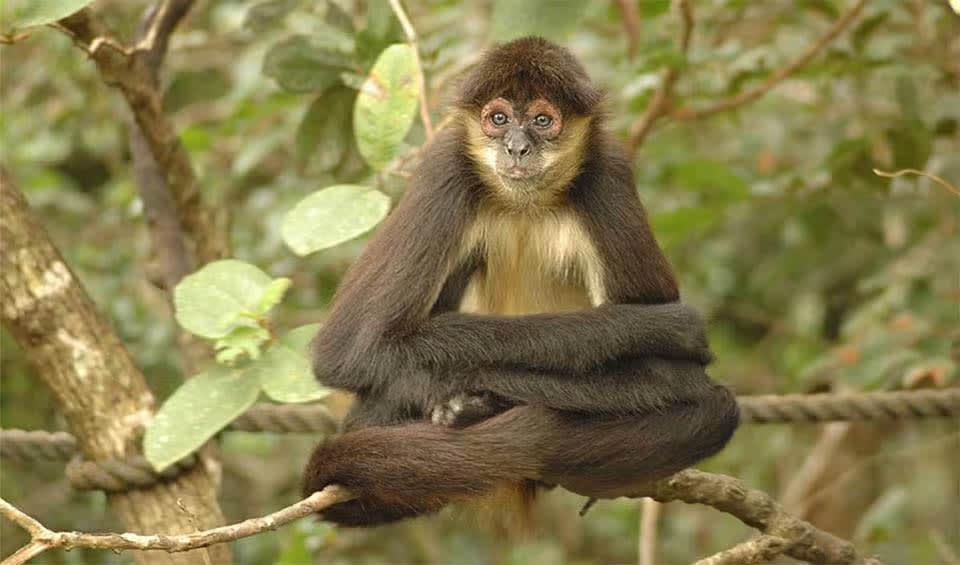Ateles – Spider monkeys
Home of the largest of all new-world monkeys
Spider monkeys are among the most distinctive and fascinating primates in the New World, known for their elongated limbs and prehensile tails, which grant them an almost spider-like appearance as they navigate the forest canopy. These highly arboreal monkeys are native to the tropical rainforests of Central and South America, where they play a vital role in the ecosystem, particularly in seed dispersal due to their fruit-heavy diet.
The coloration of spider monkeys varies significantly across species and even within populations, ranging from yellowish-beige to dark crimson and black, contributing to their striking appearance. This diversity in coloration is not only a factor of genetic variation but also plays a role in social recognition and adaptation to different forest environments. The prehensile tail, a hallmark of spider monkeys, acts as a fifth limb, providing remarkable skill and strength for grasping and maneuvering through the treetops.
Spider monkeys prefer ripe fruits, which make up the bulk of their diet, but they also consume flowers, seeds, and insects to meet their nutritional needs. Their foraging behavior is crucial for dispersing seeds throughout the forest, making them key contributors to the health and regeneration of their habitats. The monkeys’ ability to travel large distances in search of food ensures a wide distribution of the seeds they consume, aiding in forest diversity and resilience.
Spider monkeys exhibit a fission-fusion social structure, where the size and composition of groups change dynamically over time. This flexible social organization allows them to adapt to the availability of food resources and minimize competition among group members.
Contrary to guarding territories aggressively, spider monkeys are relatively tolerant of overlapping ranges with other groups. Their arboreal lifestyle and brachiation, or arm-swinging, allow them to cover vast areas of the forest in search of food, often utilizing their tails for additional support and balance.
Species in this genus
Brown spider monkey
One of the most threatened primates in the Neotropics and has been listed six times as one of the world’s 25 most endangered primates
Black-headed spider monkey
Agile arboreal acrobats with distinctive black fur swinging through the rainforests of Central and South America
Geoffroys spider monkey
Hooks for hands…
White-bellied spider monkey
With its long limbs, thumbless hands, and graceful movements, this monkey gracefully resembles a spider in the tree canopy




